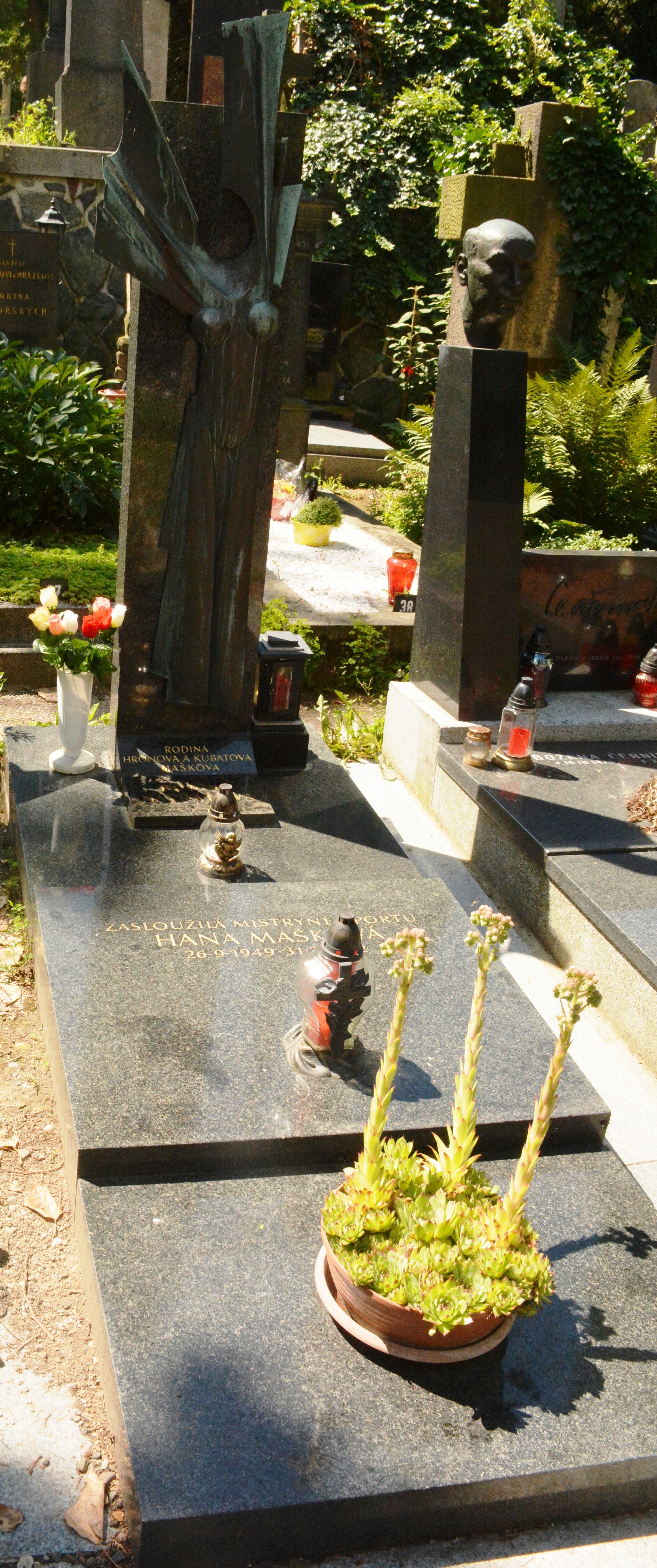1. Life and Career
Hana Mašková's journey in figure skating began in her childhood, where her talent was quickly recognized and nurtured by dedicated coaches. Her early competitive appearances marked the beginning of a distinguished international career.
1.1. Childhood and Talent Discovery
As a child, Hana Mašková spent a significant amount of time on the ice at the Štvanice Stadium in Prague. Her innate talent was spotted by Karel Glogar, a coach who had previously played a crucial role in the early career of two-time World champion Ája Vrzáňová. This early recognition set the foundation for her future success in the sport.
1.2. Coaching
Throughout her competitive career, Mašková was guided by several influential coaches. After Karel Glogar, she trained under Jaroslav Sadílek. From 1963 onwards, her coaching was primarily handled by Míla Nováková, who oversaw her development through her most successful years.
1.3. International Debut and Early Participation
Mašková's international competitive career commenced at the 1963 European Figure Skating Championships held in Budapest. The following year, she made her debut at the 1964 World Figure Skating Championships in Dortmund. At just fifteen years old, she represented Czechoslovakia at the 1964 Winter Olympics in Innsbruck, where she placed 15th. These early experiences provided her with valuable exposure to high-level international competition.
2. Major Achievements and Activities
Hana Mašková's career was marked by several significant achievements, particularly her medal-winning performances at major international championships and her subsequent transition to professional skating.
2.1. Olympic Games
Mašková's most notable achievement came at the 1968 Winter Olympics in Grenoble, where she secured the bronze medal in ladies' singles. She finished behind Peggy Fleming of the United States, who had already claimed two World titles, and Gabriele Seyfert from East Germany. This historic win made her the only Czech woman to earn an Olympic medal in figure skating, a distinction that remains to this day.
2.2. World Championships
Mašková was a consistent contender at the World Figure Skating Championships. She earned two bronze medals at this prestigious event, first in 1967 in Vienna and then again in 1968 in Geneva, demonstrating her sustained excellence on the global stage.
2.3. European Championships
Her performances at the European Figure Skating Championships were particularly strong. In 1967, she won a silver medal in Ljubljana, Yugoslavia, finishing second to Gabriele Seyfert. The pinnacle of her European career came in 1968 when she captured the gold medal in Västerås, Sweden, becoming the European champion. She continued her success at the event in 1969, earning another silver medal in Garmisch-Partenkirchen, West Germany, once again placing behind Gabriele Seyfert.
2.4. Professional Skating
Following the 1969 European Championships, Hana Mašková decided to retire from amateur competition. Despite an invitation from Ája Vrzáňová to join a professional show earlier, Mašková chose to compete for one more year before making the transition. In 1969, she officially joined the renowned "Holiday on Ice" tour, embarking on a new chapter as a professional skater.
3. Competitive Results
| International | |||||||
|---|---|---|---|---|---|---|---|
| Event | 1962-1963 | 1963-1964 | 1964-1965 | 1965-1966 | 1966-1967 | 1967-1968 | 1968-1969 |
| Olympics | 15th | 3rd | |||||
| Worlds | 16th | 13th | 6th | 3rd | 3rd | WD | |
| Europeans | 15th | 7th | 4th | 2nd | 1st | 2nd | |
| Prague Skate | 4th | 1st | 1st | 1st | |||
| National | |||||||
| Czechoslovak | 1st | 1st | 1st | 1st | 1st | ||
| WD = Withdrew | |||||||
4. Death

Hana Mašková's life was tragically cut short on March 31, 1972, when she was killed in a car crash near the French town of Vouvray. She was 22 years old at the time of her death. Her tomb is located at the historic Vyšehrad cemetery in Prague, Czechia. The grave is adorned with a distinctive winged female torso sculpture, created by the renowned Czech sculptor Jan Štursa.